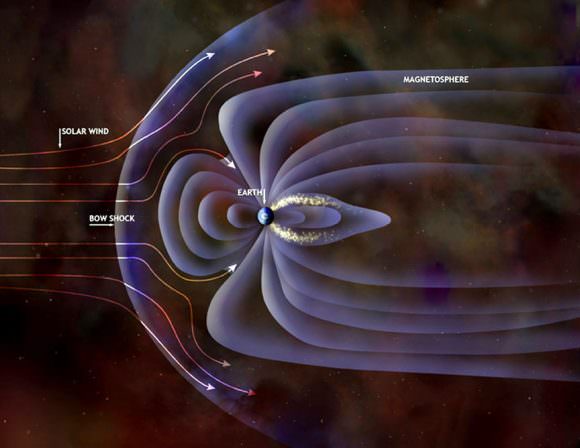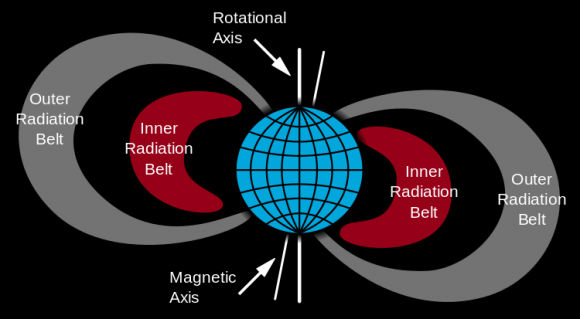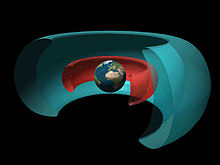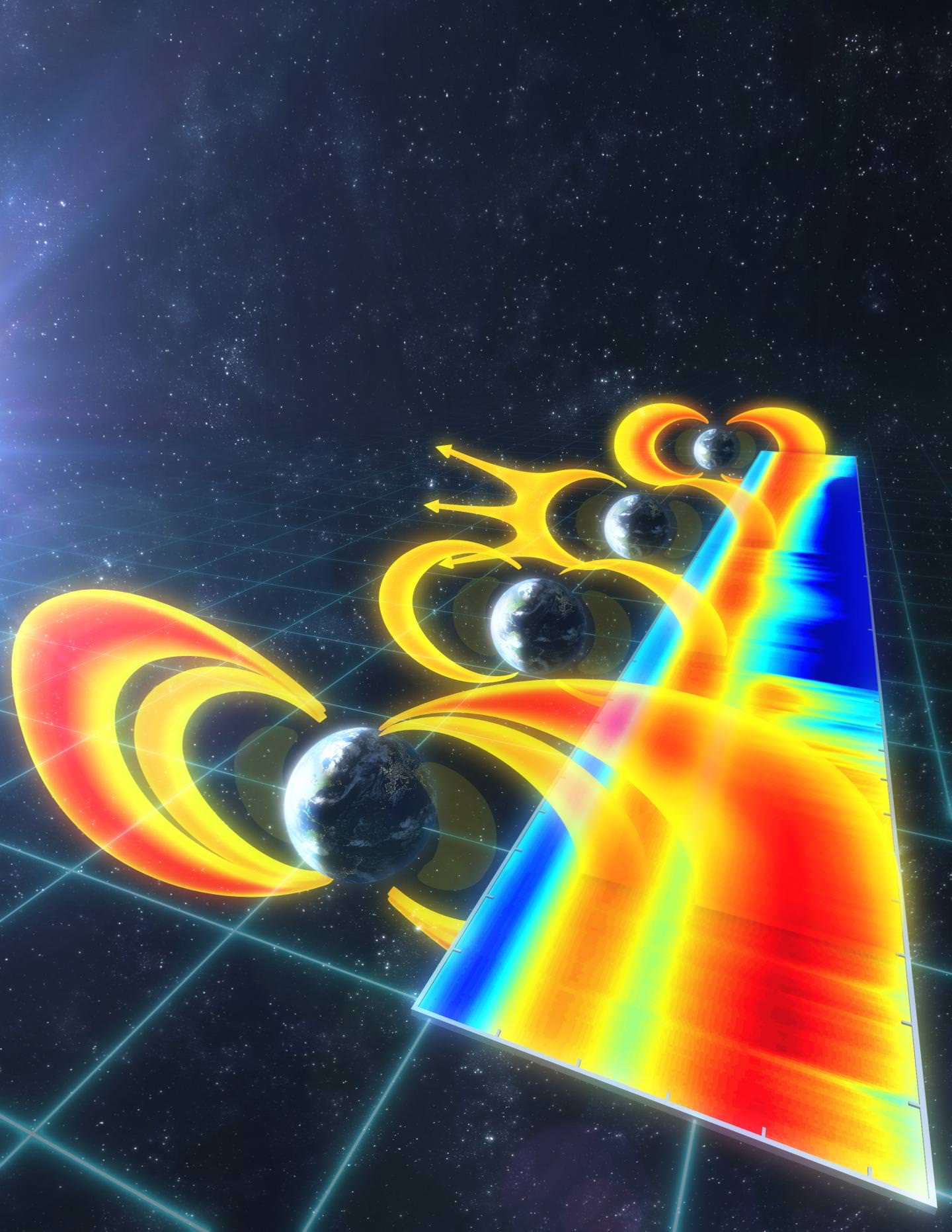The dynamic relationship between Earth and the Sun two sides. The warmth from the Sun makes life on Earth possible, but the rest of the Sun’s intense energy pummels the Earth, and could destroy all life, given the chance. But thanks to our magnetosphere, we are safe.
The magnetosphere is our protective shield. It’s created by the rotation of the molten outer core of the Earth, composed largely of iron and nickel. It absorbs and deflects plasma from the solar wind. The interactions between the magnetosphere and the solar wind are what create the beautiful auroras at Earth’s poles.

In the inner regions of Earth’s magnetosphere are the Van Allen belts, named after their discoverer James Van Allen. They consist of charged particles, mostly from the Sun, and are held in place by the magnetosphere. Usually, there are two such belts.

But the output from the Sun is not stable. There are periods of intense energy output from the Sun, and when that happens, a third, transient belt can be created. Up until now, the nature of this third belt has been a puzzle. New research from the University of Alberta has shown how this phenomena can happen.
Researchers have shown how a so-called “space tsunami” can create this third belt. Intense ultra-low frequency plasma waves can transport the outer part of the radiation belt into interplanetary space, and create the third, transient belt.
The lead author for this study is physics professor Ian Mann from the University of Alberta, and former Canada Research Chair in Space Physics. “Remarkably, we observed huge plasma waves,” said Mann. “Rather like a space tsunami, they slosh the radiation belts around and very rapidly wash away the outer part of the belt, explaining the structure of the enigmatic third radiation belt.”
This new research also sheds light on how these “tsunamis” help reduce the threat of radiation to satellites during other space storms. “Space radiation poses a threat to the operation of the satellite infrastructure upon which our twenty-first century technological society relies,” adds Mann. “Understanding how such radiation is energized and lost is one of the biggest challenges for space research.”
It’s not just satellites that are at risk of radiation though. When solar wind is most active, it can create extremely energetic space storms. They in turn create intense radiation in the Van Allen belts, which drive electrical currents that could damage our power grids here on Earth. These types of storms have the potential to cause trillions of dollars worth of damage.
A better understanding of this space radiation, and an ability to forecast it, are turning out to be very important to our satellite operations, and to our exploration of space.
The Van Allen belts were discovered in 1958, and classified into an inner and an outer belt.

In 2013, probes reported a third belt which had never before been seen. It lasted a few weeks, then vanished, and its cause was not known. Thanks to Mann and his team, we now know what was behind that third belt.
“We have discovered a very elegant explanation for the dynamics of the third belt,” says Mann. “Our results show a remarkable simplicity in belt response once the dominant processes are accurately specified.”
An understanding of the radiation in and around Earth and the Van Allen belts is of growing importance to us, as we expand our presence in space. Our technological society relies increasingly on satellite communications, and on GPS satellites. Radiation in the form of high-energy electrons can wreak havoc on satellites. In fact, this type of radiation is sometimes referred to as a satellite killer. Satellites require robust design to be protected from them.
Organizations like the United Nations Committee on the Peaceful Uses of Outer Space (COPUOS) and the International Living with a Star (ILWS) Program are attempts to address the threat that radiation poses to our system of satellites.


“Starfish Prime”, a series of dangerous, high-altitude nuclear tests of the United States in the 1950’s-1960’s, also created new temporary Van Allen Belts.
the best explanation so far for solar wind
http://gpcpublishing.com/index.php?journal=gjp&page=article&op=view&path%5B%5D=443